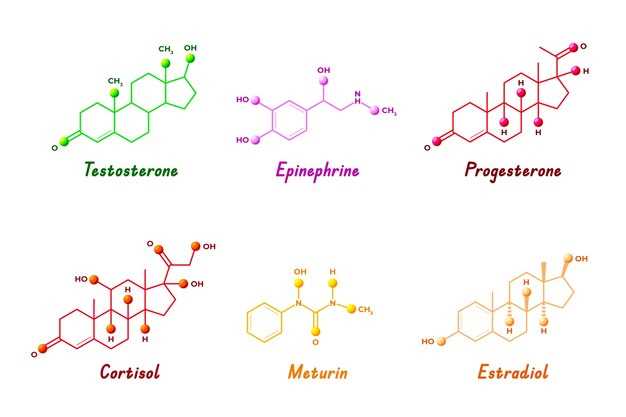
Unleash the power of Propranolol and explore its fascinating molecular structure!
Are you intrigued by the wonders of modern pharmaceuticals and their intricate designs? Look no further than Propranolol, a groundbreaking compound that has revolutionized the world of medicine.
Step into the realm of chemistry and uncover the secrets of this exceptional substance. Propranolol’s chemical composition holds the key to its remarkable properties, offering a glimpse into its extraordinary potential.
Take a journey through the intricacies of Propranolol’s molecular architecture, visualizing its bonds and connections. Marvel at the arrangement of atoms and discover how this masterpiece of scientific innovation can positively impact your well-being.
Join us as we delve into the depths of Propranolol’s organic structure, deciphering its unique characteristics and unlocking the mysteries of its chemical framework. With a fusion of curiosity and knowledge, embrace the world of pharmaceutical marvels.
Unlock the extraordinary potential within Propranolol’s chemical composition and embark on a captivating exploration of scientific discovery!
About Propranolol

In this section, we will explore the fascinating mechanism of action of a remarkable pharmaceutical compound. Propranolol, a medication that belongs to a group of drugs known as beta-blockers, has garnered significant attention for its versatile applications in the medical field.
When it comes to understanding how propranolol operates within the body, one must delve into its intricate interactions with the biological systems. By targeting beta receptors found in various tissues and organs, propranolol exerts its effects in a unique and profound manner.
The Remarkable Mechanism of Action
Propranolol’s mechanism of action lies in its ability to competitively block the beta-adrenergic receptors, thereby preventing the binding of neurotransmitters like adrenaline (also known as epinephrine) and noradrenaline (also referred to as norepinephrine).
Through this inhibition, propranolol counteracts the stimulatory effects of these neurotransmitters, ultimately leading to a reduction in heart rate and blood pressure. By mitigating sympathetic nervous system activity, this medication helps to regulate and stabilize the cardiovascular system.
Furthermore, propranolol demonstrates its versatility by exerting additional effects on other systems. It can reduce the secretion of renin, a hormone involved in blood pressure regulation, and inhibit the release of insulin, thereby impacting glucose metabolism.
The Clinical Significance
Understanding propranolol’s mechanism of action not only sheds light on its wide-ranging applications but also underlines its value in the medical field. Physicians commonly prescribe this medication to manage various cardiovascular conditions such as hypertension, arrhythmias, and angina pectoris.
Moreover, propranolol has shown efficacy in treating conditions beyond the cardiovascular realm. It has been utilized to alleviate symptoms of anxiety disorders, prevent migraines, and even reduce the risks associated with certain types of tumor growth.
However, it is essential to note that the use and dosage of propranolol should be determined by a healthcare professional, as its mechanism of action can have profound effects on the body.
In conclusion, propranolol’s mechanism of action is a captivating phenomenon that highlights the complexity of pharmaceutical interventions. Its ability to modulate beta receptors and its widespread clinical applications make it an indispensable tool in medical practice.
Stay tuned for the next section, where we will delve deeper into the indications and uses of this remarkable medication.
Mechanism of Action
Understanding the mechanism of action is vital to grasp the effectiveness of this pharmacological agent. It is imperative to know how it works in order to comprehend its benefits. The intricate workings of this medication are the key to its success in the treatment of various conditions.
Propranolol engages in its mechanism of action through a complex interaction with specific receptors in the body. By binding to these receptors, it exerts its therapeutic effects. This interaction leads to a series of biochemical reactions that modulate physiological processes and enhance overall well-being.
During this process, Propranolol influences certain physiological responses in an orchestrated manner. By regulating these responses, it manages to address an array of varied indications, rendering it a versatile medication.
Propranolol modulates various pathways in the body, promoting a desired effect on the targeted condition. By doing so, it helps alleviate symptoms and manages the underlying causes, providing relief and improving the quality of life for individuals.
Through its unique mode of action, Propranolol has proven to be effective in a range of clinical applications. From cardiovascular disorders to anxiety and migraine prevention, its versatile mechanism of action makes it indispensable in the field of medicine.
Understanding the mechanism of action of Propranolol is vital for both healthcare professionals and individuals seeking treatment options. By delving into the intricacies of how this medication works, one can appreciate its value and efficacy in managing various indications and improving overall health.
Indications

In this section, we will explore the various conditions in which Propranolol can be used to provide therapeutic benefits. It is important to understand the range of indications for this medication in order to make informed decisions in consultation with healthcare professionals.
Cardiovascular Conditions
Propranolol exhibits its effectiveness in managing a variety of cardiovascular conditions. It is commonly prescribed for the treatment of high blood pressure, also known as hypertension. By reducing the force and rate at which the heart beats, it helps to decrease blood pressure levels.
Furthermore, Propranolol plays a crucial role in the management of angina, which is a condition characterized by chest pain due to reduced blood flow to the heart. By relaxing the blood vessels, it allows for an improved blood supply to the heart, thereby alleviating the symptoms associated with angina.
Additionally, Propranolol is used in the treatment of certain types of arrhythmias, irregular heart rhythms, by regulating the electrical signals that control the heart’s contractions. This helps to establish and maintain a normal heart rhythm.
Anxiety and Migraine Disorders
Beyond its cardiovascular applications, Propranolol is also utilized in the management of anxiety disorders. By blocking certain chemical signals in the brain, it can help reduce symptoms of anxiety, such as rapid heartbeat, trembling, and sweating.
In the realm of headache disorders, Propranolol has shown efficacy in preventing migraines. By constricting the blood vessels in the brain and reducing the release of certain neurotransmitters associated with migraines, it can reduce the frequency and intensity of these debilitating headaches.
Other Indications
Propranolol may also be prescribed for other conditions such as performance anxiety, essential tremors, and certain types of tumors such as hemangiomas. However, it is important to consult with a healthcare professional for a thorough evaluation and accurate diagnosis before starting any treatment.
| Indications | Examples |
|---|---|
| Cardiovascular Conditions | High blood pressure, Angina, Arrhythmias |
| Anxiety and Migraine Disorders | Anxiety disorders, Migraines |
| Other Indications | Performance anxiety, Essential tremors, Hemangiomas |
Side Effects
When considering the effects of the medication, it is important to take into account the potential consequences that may arise. While Propranolol certainly offers numerous benefits, it is crucial to be aware of the possible side effects that could occur during its usage. These effects may manifest differently for each individual and can range in severity.
Physical Effects
In some cases, individuals taking this medication may experience various physical symptoms as a result. These may include changes in heart rate, blood pressure, and body temperature. Additionally, there may be instances of digestive issues such as nausea, stomach pain, or diarrhea. It is important to monitor any physical changes and consult a healthcare professional if necessary.
Psychological Effects
Alongside the physical effects, there may also be psychological repercussions from taking Propranolol. Some individuals may notice changes in their mood or emotional state, such as feeling unusually fatigued, irritable, or depressed. These effects should be observed and reported to a healthcare provider to ensure proper management.
It is essential to remember that not everyone will experience these side effects, and they may vary in intensity. Proper medical guidance and adherence to the prescribed dosage are crucial to minimize the occurrence and impact of these potential effects.
Always consult a healthcare professional for personalized advice and recommendations based on your individual condition and medical history.
How to Use
In this section, we will explore the practical aspects of using the product, highlighting its recommended usage and providing guidelines for a safe and effective experience.
1. Dosage
It is crucial to follow the prescribed dosage instructions provided by your healthcare professional. The appropriate dosage may vary based on individual needs and the specific condition being treated. It is essential not to exceed the recommended dosage without consulting a healthcare provider.
2. Administration
The product is typically taken orally, with or without food, as directed by a healthcare professional. It is important to swallow the medication whole and avoid crushing or chewing it. If you have trouble swallowing the product, alternative forms like liquids or dissolvable tablets may be available.
3. Timing
The timing of administration is essential for optimal results. It is advised to take the medication at the same time each day to maintain a consistent level of the product in your system.
4. Duration of Use
The duration of treatment will be determined by your healthcare provider. It is crucial to complete the prescribed course of treatment, even if your symptoms improve earlier. Suddenly stopping the use of the product without medical guidance could lead to adverse effects.
5. Storage
It is important to store the product in a cool, dry place and away from direct sunlight. Follow the instructions provided on the packaging to ensure proper storage conditions. Keep the product out of reach of children and pets.
6. Missed Dose
If you forget to take a scheduled dose, take it as soon as you remember. However, if it is close to the time for your next dose, skip the missed dose and resume your regular dosing schedule. Do not double the dosage to make up for a missed one.
Remember to always consult your healthcare provider for personalized instructions on how to use the product. They will consider your specific medical condition and provide you with the most appropriate guidance.
